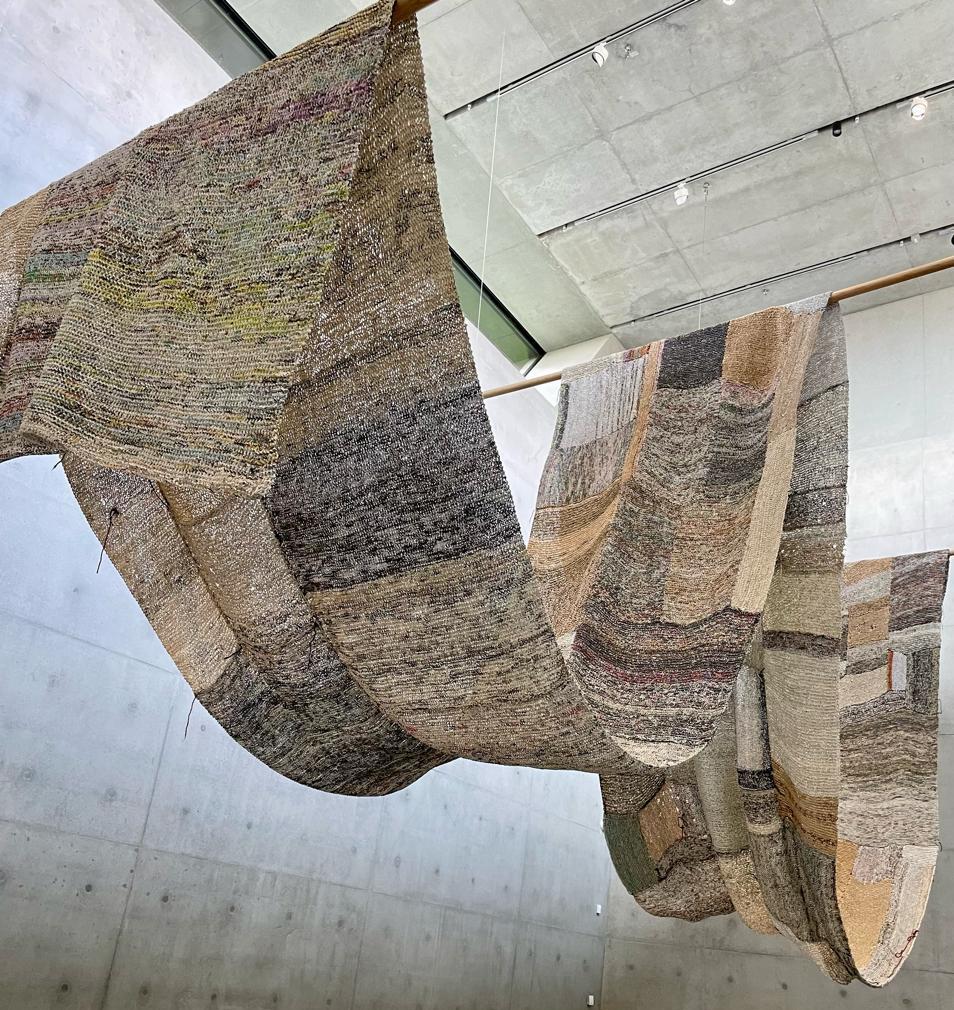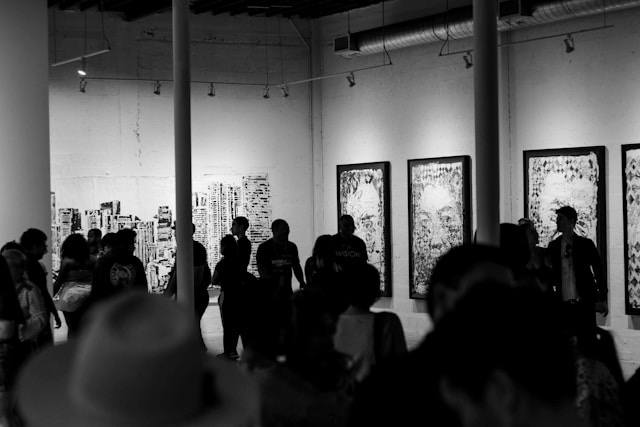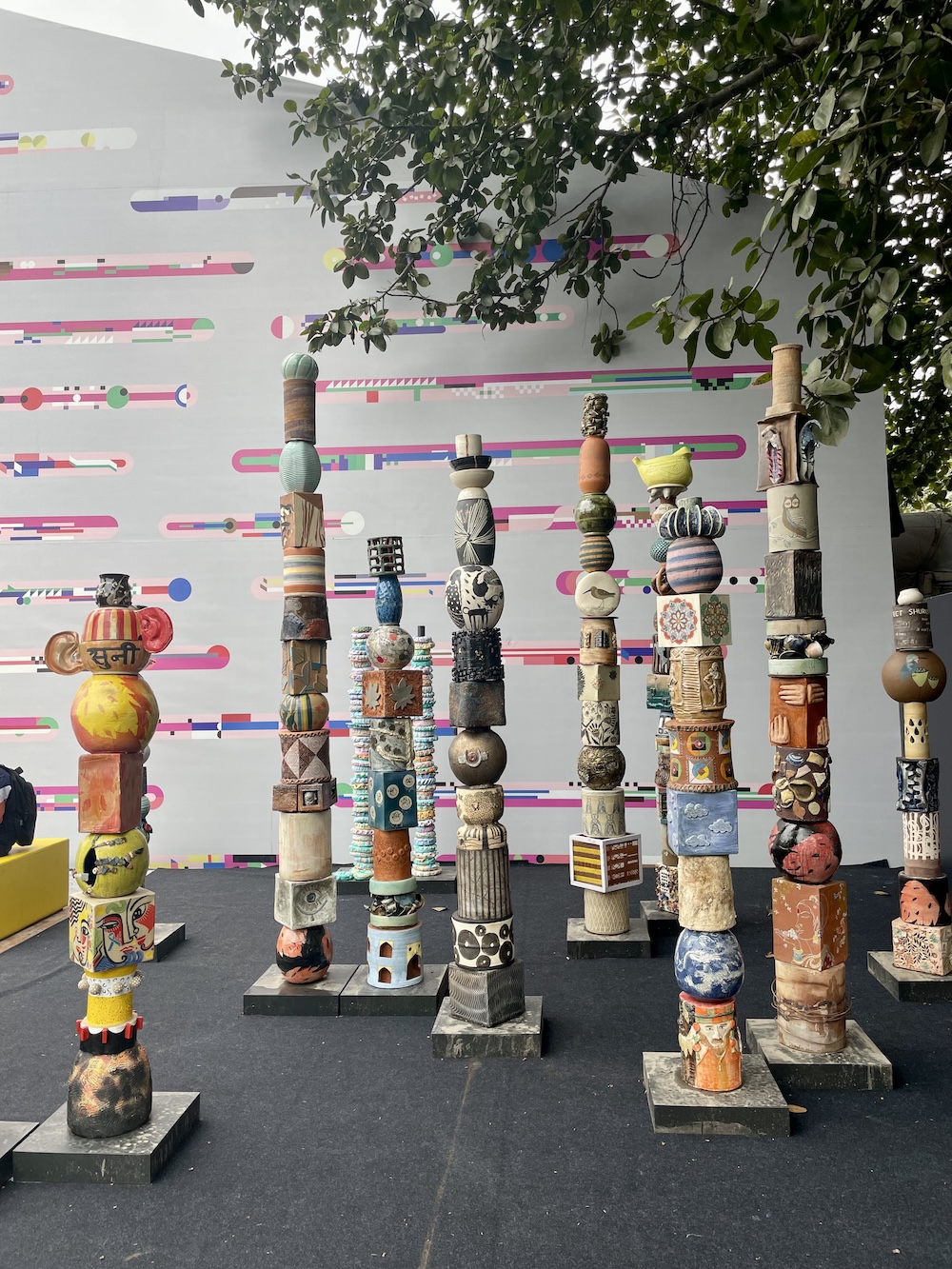For the small town of Arles in the south of France, Frank O. Gehry’s tower means a new landmark, not only because of its size, the twisted shape and aluminum façade sparkling in the sunlight, but also because the building is located within the one-of-a-kind LUMA Foundation’s Art Campus and thus promises to become a point of attraction in the region.
Arles has always been a source of inspiration for art: Vincent van Gogh for example settled in this town in France’s most beautiful regions, the Provence, because of the special light. This famous light now refracts, flickers, and reflects in the more than 11,000 aluminum ashlars on the tower’s facade.
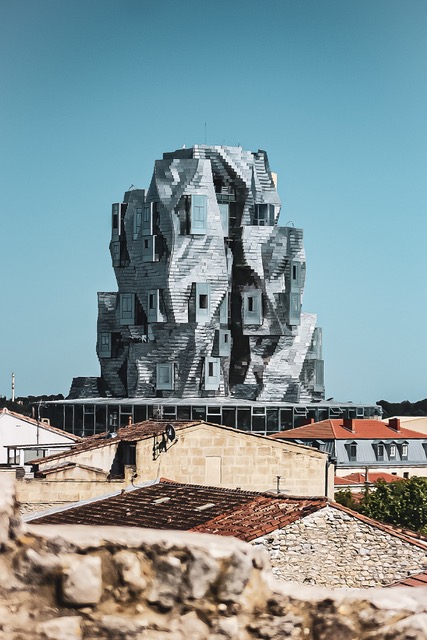
For Gehry, this project was certainly not an entirely new task, since he knows his way around museum buildings: In addition to the Guggenheim Bilbao and the Vitra Design Museum in Weil am Rhein, as well as the Fondation Louis Vuitton near Paris, which was completed in 2014, the now 92-year-old has created outstanding buildings that, in addition to the actual purpose of art education, attract many visitors -not only but also- because of their special architecture and have since become landmarks in their own right.
In his latest work, eight stories wind out of a glass base at a total height of 56 meters in twists and countless angles, offering a total area of about 15,831 square meters. The LUMA Foundation tower now houses gallery and project spaces as well as office spaces for research and archiving. In addition, workshop and seminar rooms are located in the building.
In 2008, Maja Hoffmann acquired the former SNCF site with its historic locomotive workshops and since had them gradually converted into exhibition and performance spaces, studios and gastronomy. Since 2014, these restored factory buildings have been used by the LUMA Foundation. The site also includes a public park designed by landscape architect Bas Smets (Brussels) as a Mediterranean garden with more than 500 newly planted trees. On a site that originally housed seven railroad factories, there are now exhibition and performance spaces next to the tower in four of the factory buildings renovated by Selldorf Architects (New York).
Art collector and patron Maja Hoffmann, who comes from the family of Hoffmann-La Roche, the world’s largest pharmaceutical company by sales, herself grew up and went to school in Arles. In 2004, she established the Swiss Luma Foundation, based in Zurich, to promote interdisciplinary projects in the fields of art and culture, human rights, the environment, education and upbringing. But she also always wanted to give something back to „her“ city and therefore planned for about 15 years at the LUMA Foundation in Arles, so that this project can easily be called her life’s work. With it she wanted to create an „utopia for a cultural institution of the 21st century“, nothing more and nothing less. The tower was also her idea, not the architects‘.
Since June 26th, the three-and-a-half-hectare old factory site has been open to everyone free of charge. Young people can, for example, skate in a phosphorescent skate park designed by Korean artist Koo Jeong A and thus be introduced to art in a playful way. Because, and this is the dark side of Arles, 23% of the inhabitants live below the poverty line. The Fondation Luma Arles promises to become a new crowd puller and also provide an economic boost.
In each room of the tower or in the renovated factory halls and in the park one discovers a different artist: German installation artist Carsten Höller has invented a magical mirror bridge over the lake in the park, and his „Isometric Slide,“ a steel slide, has been built into the interior of the tower. Olafur Eliasson has created a monumental, spinning ceiling mirror that astonishes viewers inside. Parisian video artist Pierre Huyghe has darkened a huge old railroad hall to constantly produce new LED images from bees and ants living there; a procedure controlled by artificial intelligence and brain waves of visitors, it is said. Pierre Huyghe is one of the artists who fits Hoffmann’s idea exactly, as she wants to produce art in Arles, not communicate. That means there’s no gift store or heavy advertising for the new site, but new young artists will come regularly for residencies to pursue their art undisturbed in this creative environment. There are workshops and labs on the site that can provide new biological materials for art, allowing new techniques to be tried. An art school is also planned on the site.
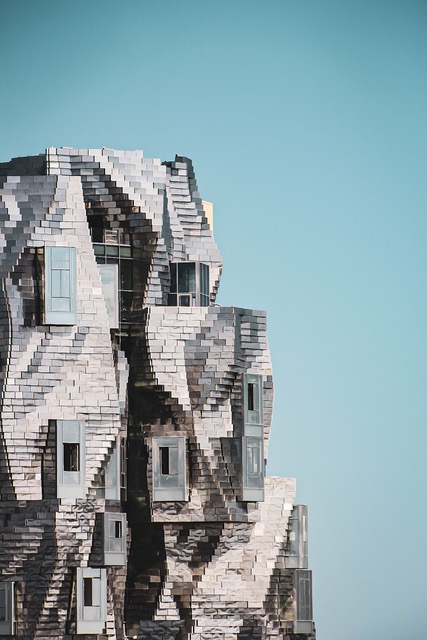
In the historic old town with its narrow streets, the tower and the building complex are not visible, but as soon as you leave the city walls behind, the squat tower stands out from the flat buildings of Arles. Despite all modernity, the historical architecture is cited several times by the architects: for example, the format of the limestone ashlars, which can be seen in the Roman or Romanesque buildings of the old town, is the same as that of the ashlars on the facade. The Alpilles limestone is also used in some places in a particularly visible way, for example on the side of the tower facing away from the city. Thus, the complex blends in with the historical architecture and the landscape.
The glass base and the actual exhibition building on which the tower rises are similar in scale to the central monument of the city of Arles, the Roman amphitheater, which was intended by Gehry to quote Roman architecture. A spectacular spiral staircase, which resembles the stairs in the amphitheater, leads through the various floors and opens the view for visitors to the top-class art program of the Fondation LUMA, based on the collection of the Hoffmann family and expanded with the aforementioned new works by Olafur Eliasson or Carsten Höller.
The environment was also taken into account in the construction: Gehry Partners planned the building for minimal energy consumption, photovoltaic systems provide appropriate energy as does a central heating system using biodiesel. The glass base is automatically shaded and the tower has a sustainable ventilation system. In addition, mainly regional materials and companies are to be involved in the realization.
Since June 26, works from the LUMA Foundation and Sammlung Hoffmann have been on display in the new space, including works by Alighiero Boetti, Ian Cheng, Isa Genzken, Annie Leibowitz, Anri Sala and many other top modern and contemporary artists.
Luma Arles is thus a think tank for culture and ecology. Architecture, art, research and environmental protection intertwine here, creating a new creative center for art and culture in Europe in this small town.
More information about the current program can be found here

